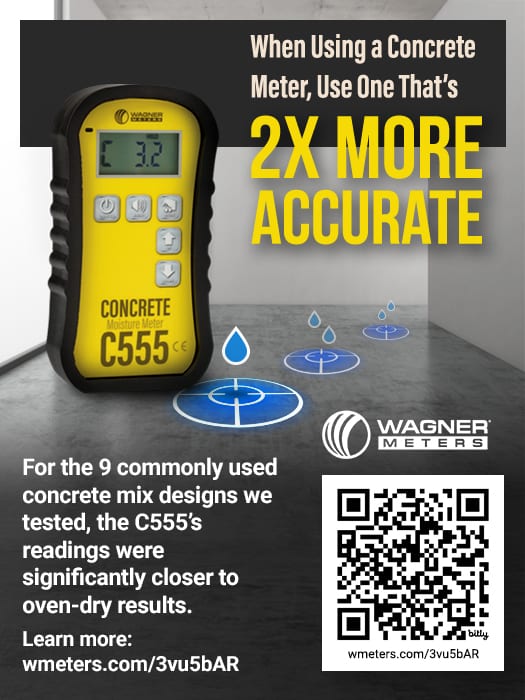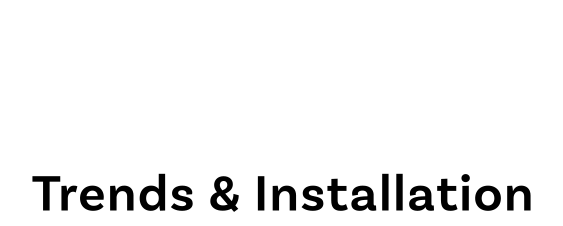By Tanja Kern
Resilient Floors Dethrone Hardwood in 2025 Kitchen Flooring Trends
Kitchen & Bath

Resilient flooring, such as Karastan LuxeCraft Serenity WPC, has taken the lead spot in kitchen remodels. Photo: Karastan.
Traditional design elements are making a powerful comeback in 2025, while practical innovations in flooring and backsplash materials are reshaping how homeowners approach their kitchen renovations.
The kitchen flooring landscape has undergone a significant transformation, with vinyl and resilient flooring emerging as the new champion of kitchen surfaces, according to the 2025 Houzz Kitchen Trends Study, the kitchen flooring landscape has significantly transformed. Vinyl and resilient flooring are now the new champions of kitchen surfaces. For the first time, these materials have overtaken hardwood, capturing 22% of renovating homeowners' choices. This shift signals a growing preference for practicality without sacrificing style.
"The rise of vinyl and resilient flooring reflects a broader trend toward materials that offer both durability and value," said David Moore, vice president of product management, Mohawk. "Today's homeowners want flooring that can withstand heavy foot traffic while maintaining its appearance for years to come."
Hardwood follows closely at 21%, with ceramic or porcelain tile maintaining a strong presence at 20%. Engineered wood has carved out its own niche at 16%, while natural stone has seen a notable decline, now chosen by only 5% of homeowners. This shift toward more resilient materials aligns with the finding that 71% of homeowners cite long-term cost-effectiveness as their primary motivation for sustainable choices.
The most dramatic evolution in kitchen design is happening on the walls. Full-coverage backsplashes that extend to the cabinets or range hood have become the standard, with 67% of homeowners embracing this bold look – a 5% increase from the previous year. Even more striking is the growing trend of ceiling-height backsplashes, now chosen by 12% of homeowners.
When it comes to materials and patterns, homeowners are embracing a mix of classic and contemporary. Ceramic tile leads the material choices at 34%, followed by porcelain at 17%. Rectangular tiles dominate the shape selection at 68%. The timeless horizontal brick pattern remains the most popular arrangement, chosen by nearly 40% of renovators.

Engineered wood floors are chosen by 16% of homeowners in kitchens, according to the Houzz study. Photo: Anderson Tuftex.
These trends are emerging against a backdrop of significant kitchen investments. “Kitchens already command the highest renovation spend of all interior projects but what stands out is the increased focus and investments, with the top 10% of homeowners spending triple the median for high-end major remodels,” said Marine Sargsyan, Houzz staff economist.
High-end remodels reaching $180,000 or more. The traditional style has seen a remarkable 5% increase, now chosen by 14% of homeowners, though transitional remains the leading style at 25%.
The color palette choices in 2025's kitchens reveal a sophisticated interplay between neutral foundations and strategic pops of color. While white remains the dominant force for cabinets at 33%, the real story lies in how homeowners are using color to create visual interest.
The Houzz study revealed that wood tones dominate flooring choices at 46%, followed by rich browns (15%) and sophisticated grays (10%). In backsplashes, neutral tones provide a canvas for textural interest, with white and off-white leading the way. For those choosing contrasting cabinet colors, white remains popular for upper cabinets (40%), while wood tones lead for lower cabinets (33%), with bold blues capturing over 20% of contrasting lower cabinet choices. Green and black are emerging as accent choices, particularly in lower cabinets, chosen by 10% and 8% of homeowners respectively
This careful balancing of neutral foundations with strategic color choices reflects a broader trend toward personalization without compromising resale value.

Ceramic or porcelain tile, such as Daltile’s Sovran, is chosen in 20% of kitchen projects. Photo: Daltile.
The 2025 kitchen reflects growing environmental consciousness, with over 70% of homeowners citing long-term cost-effectiveness as their primary motivation for sustainable choices. This mindset is evident in several key trends: Eco-friendly flooring, chosen by 16% of homeowners, is gaining traction. VOC-free paints, finishes, and coatings are prioritized by 24% of renovators. LED lighting leads to sustainable choices, installed by 67% of renovating homeowners. Energy-efficient appliances remain a priority for 57% of renovators, and sustainable and nontoxic cabinets are selected by 12% of homeowners.
These choices reflect a growing understanding that sustainable materials can offer both environmental benefits and long-term cost savings without compromising style or functionality.
As we move through 2025, the kitchen continues to evolve as a space where practicality meets personal expression. The surge in traditional elements, combined with modern materials and bold design choices, suggests a future where kitchens balance timeless appeal with innovative functionality.
"What we're seeing is a beautiful marriage of old and new," said Kristy Duvall, senior manager for design and marketing, West at Shaw. "Homeowners are increasingly confident in combining traditional elements with modern materials that make their kitchens both more functional and more personal."
This preference for mixing classic and contemporary elements is perhaps best exemplified in the growing trend of contrasting cabinet colors, with 24% of homeowners now opting for different colors for their upper and lower cabinets. This willingness to experiment while respecting traditional forms suggests that 2025's kitchens will continue to push boundaries while maintaining a connection to classic design principles.



